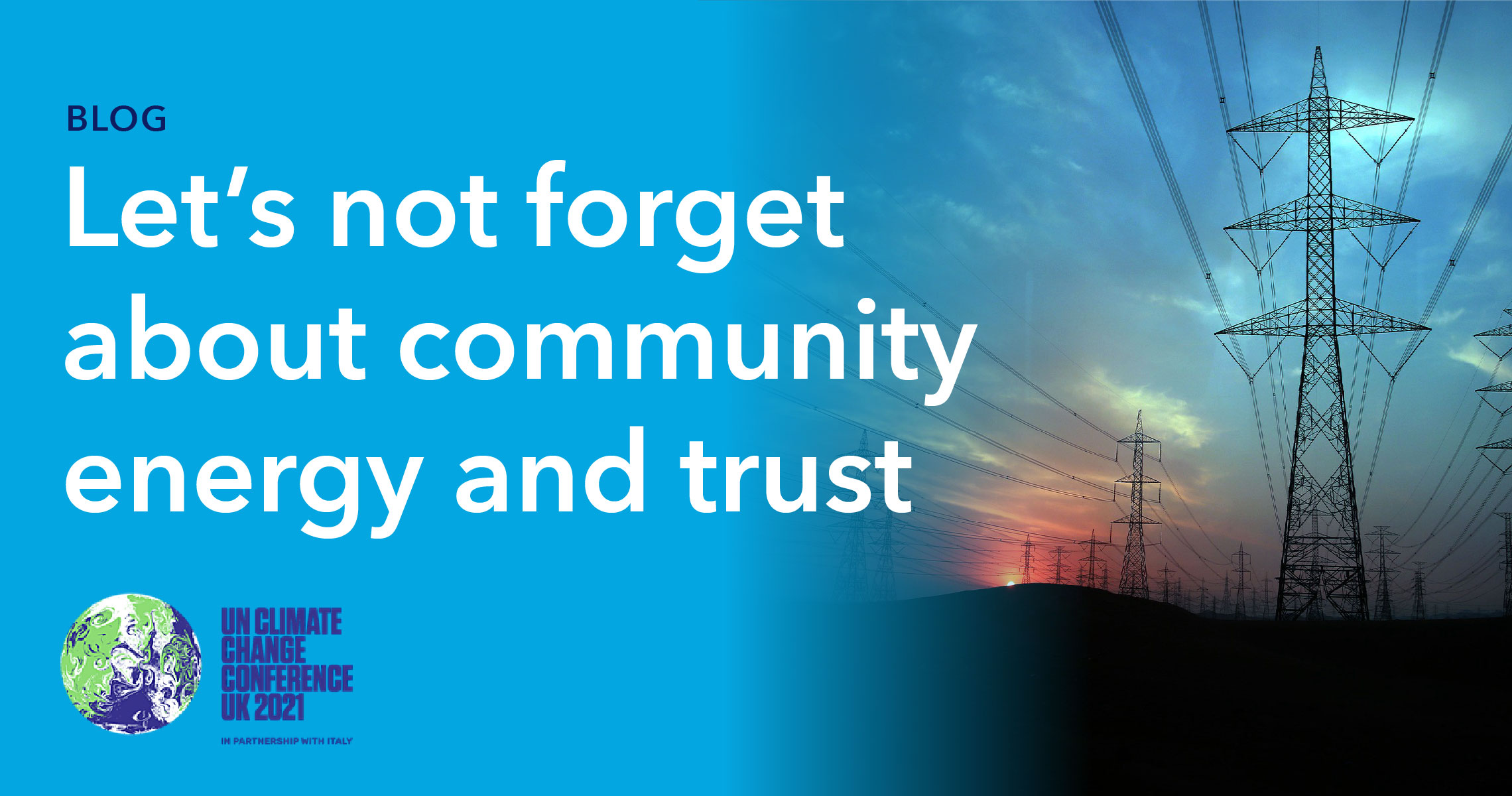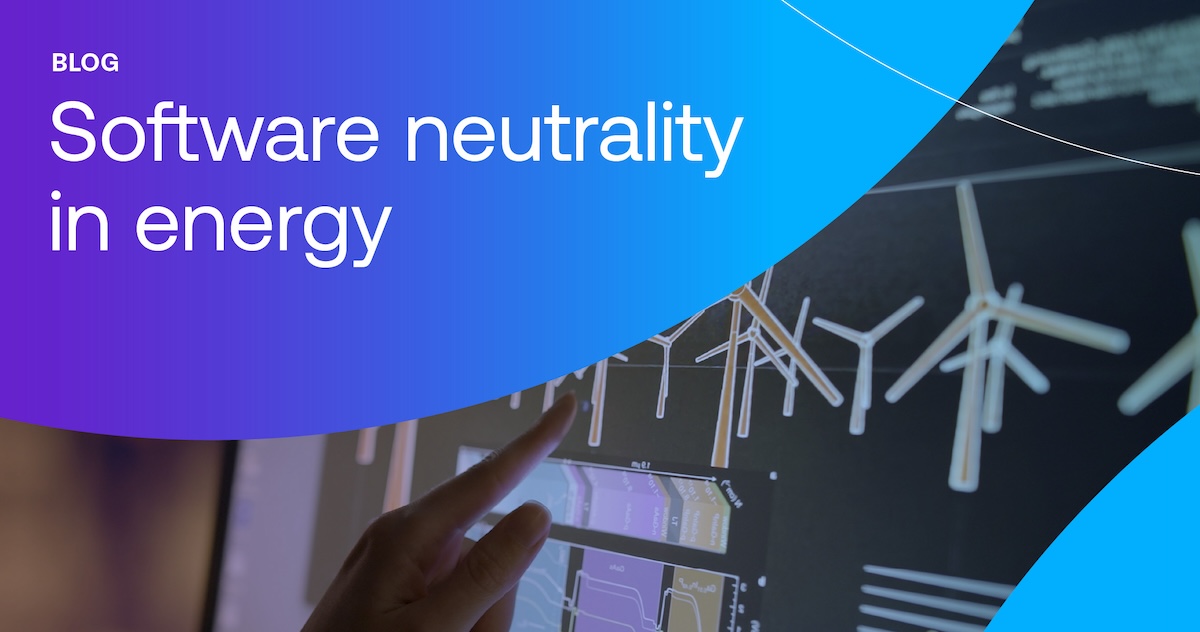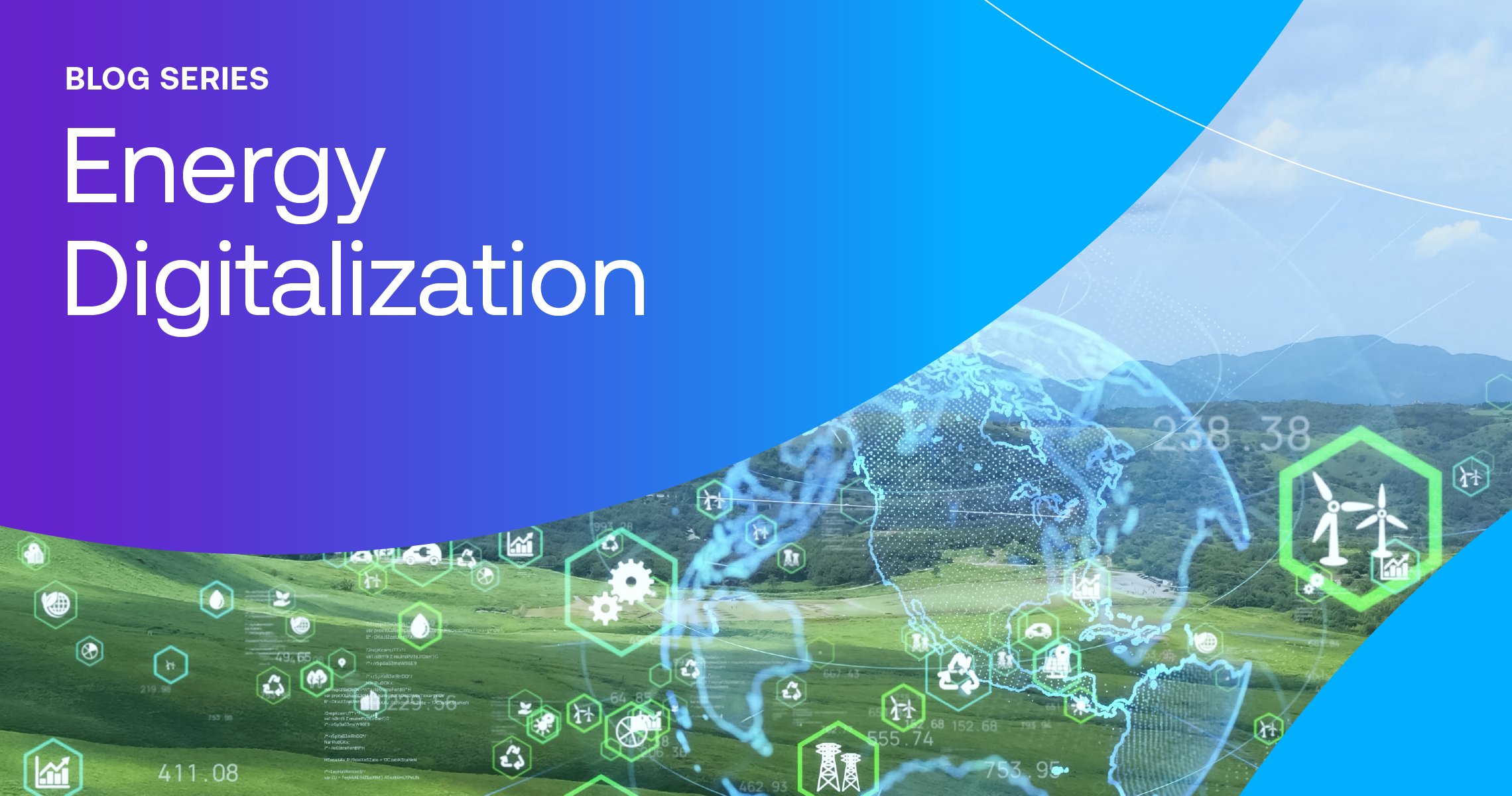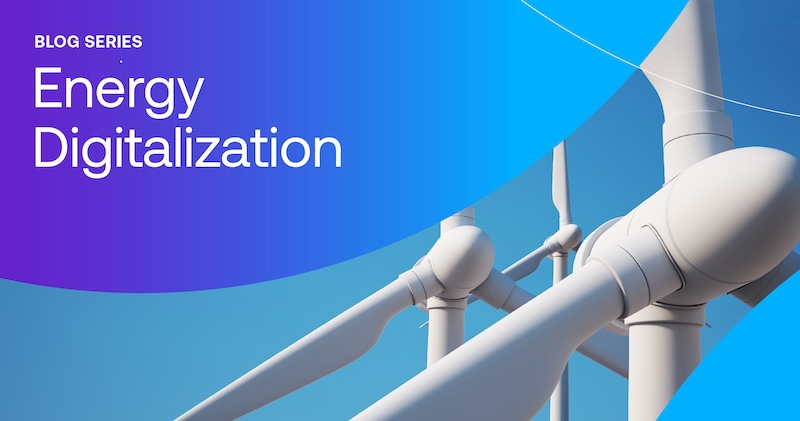COP26 is scheduled to run from October 31st to November 12th, 2021 in Glasgow, Scotland. Billed as potentially the last chance to lock in policies to avoid the potential worst case scenarios of climate change, the news is full of stories on what clean energy policies the assembled national leaders will commit to at the conference. While these international scale policies are extremely important, we should also pay attention to a trend slated to play a crucial role in meeting the targets these policies set—community energy. Community energy brings a number of benefits, perhaps most important is it promises that all communities—not just well-off ones—can benefit from the clean energy transition. However, without trusted data, community energy projects will struggle to succeed.
When people think about renewable energy, projects like solar panels on rooftops or massive wind farms come to mind. Community energy is a bit different. A definition of community energy offered by the IRENA Coalition for Action is stated as “Community energy is the economic and operational participation and/or ownership by citizens or members of a defined community in a renewable energy project.” Simply put, it is a project where the community that consumes the energy has a role in said project.
Community energy is taking a number of different shapes, from community solar projects in the United States to mini-grids in Africa. One thing they have in common is that instead of being at the receiving end of energy projects dictated top-down by utility companies, communities have a direct role in the project development and roll out. A key point is that community energy projects can be done with or without the cooperation of a local utility. There are a number of advantages for both the community and the utility partner in the latter scenario.
Benefits for the community… and the utility
Community energy projects provide a number of benefits. One of the simplest is giving a community access to affordable clean energy in the first place. In the US, community solar projects are often developed in urban areas where many residents are renters. Even if they wish for it, access to rooftop solar is only available at the whim of their landlords. Mini-grid projects in Africa can bring renewable energy to more isolated communities who might otherwise have to wait for years to be connected to the larger grid.
A major benefit of community energy is it gives the community increased control over their quality of life and economic future. Electricity is a foundation of modern life. Beyond bringing clean energy to their community, participants can do such things as design rates that fit their community’s needs and develop grid systems that are more resilient. Economic development is also impossible without electricity. Communities can design their own electrical systems to attract development by a) offering guaranteed access to renewable energy as an increasing number of companies are demanding clean energy, b) developing reliable high quality electricity delivery systems which may not otherwise be available in areas with an underdeveloped grid infrastructure, and c) have more control over the cost structure of energy in the future. The fuel cost for renewable energy is zero and electricity production can be predicted, making amortization of the equipment costs easier and cost increases more predictable.
As climate change increases the severity of extreme weather events, the resilience offered by community energy systems may be indispensable. In the US, the unprecedented drop of temperatures in Texas and nearby areas in February 2020 led to the deaths of over 100 people and left four and a half million people without power for several days. The increasing intensity of wildfires and hurricanes are also increasing the threat to electrical grids and the communities that depend on them. Hurricane Ida, which hit Lousianna hard in August 2021, at one point left about one million people in the dark. Of the 14 people killed by the storm, 11 are said to have died of causes related to the power shortage. New Orleans’ local utility had spent $210 million on a natural gas plant which was billed as a backup power source in a hurricane but it failed during Hurricane Ida. Not only can utilities fail their customers in climate emergencies, there is also evidence that certain communities can be favored in efforts to restore electricity after a calamity.
While it may seem that community energy projects would compete with utilities, they can actually be beneficial. Depending on their design, community energy projects can be considered as non-wires alternatives. By bringing energy sources close to the communities that consume energy, community energy projects can help utilities avoid large infrastructure investments such as new distribution lines.
Trusted data and community energy
Data is playing an increasing role in community energy projects. Community data is a necessary part for the planning and development of community energy. Data-driven technologies to manage energy storage and other distributed energy resources to smooth out the peaks and valleys of renewable energy are becoming mainstream and play a role in community energy projects. One example is the use of automated energy conservation technologies to reduce energy consumption when the grid is under strain. To make these systems work, data from different households must be aggregated for systems that balance the grid.
The technology for these systems are available but what will be needed to get them into widespread use is trust. When analyzed, energy data can reveal very sensitive data about a household’s private life. Unless a community trusts that their data will be used as promised and not abused, they will understandably be reluctant to share it, even for beneficial purposes. They will also need to be shown how trust is being implemented and preserved, and not just given empty promises.
Planet OS and Intertrust’s role in trusted data for community energy

Intertrust’s data technologies can play a role in providing the trusted data needed for modern community energy systems to thrive. Intertrust’s Planet OS provides easy access to environmental data to a number of companies in fields ranging from agriculture to shipping. One of those is Enercoop, an energy cooperative based in France. Founded in 2005, Enercoop offers 100% renewable energy from two sources, one of which is operated by citizens and communities. Enercoop uses Planet OS data to help estimate the production of weather dependent renewable energy.
Intertrust Platform is specifically designed to help manage a wide variety of data in a trusted and interoperable manner. It’s ability to tightly manage access to data by both humans and software in a way that can be audited is one way that data owners can be assured that their privacy and rights are being respected. Already, Intertrust Platform is being used by a Fortune 500 automotive OEM based in Germany, a culture known for its concern for data privacy. It uses Intertrust technology to share aggregated plug-in vehicle data with utilities to help them plan EV charging infrastructure.
Community energy is an important part of the clean energy transition needed to make the COP process a true success. As one recognition of this, in the US, on October 8th, 2021 the Department of Energy announced the National Community Solar Partnership with a goal of creating enough community solar power to supply the equivalent of 5 million homes by 2025. Intertrust is ready to help communities and the organizations that work with them to make sure that data and trust will not be a barrier.




